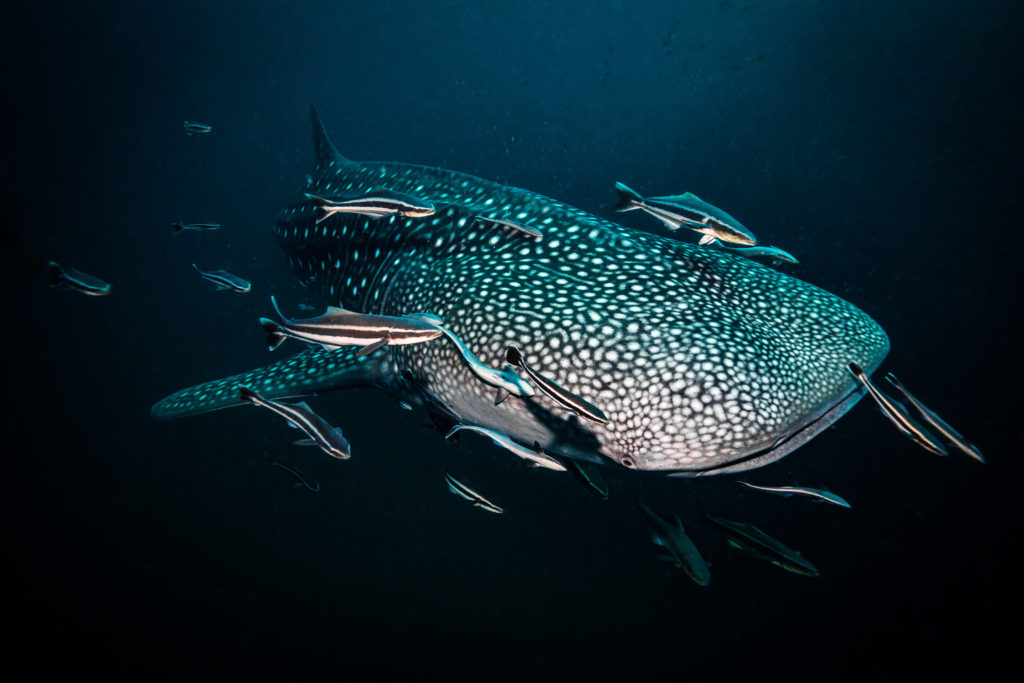The whale shark is one of the most iconic animals in the ocean. Easily recognizable, they’re on most divers’ bucket lists but mentioning them begs the question: are they whales or sharks?
What is a whale shark?
Let’s answer this one straight away: it is a shark. Not just any shark, but the biggest fish in the ocean. As mammals, whales are not considered as fish. Like other sharks, whale sharks have been around for millions of years. Their size is one of their most outstanding characteristics; they can reach over 40 feet (12 m). They average about 33 feet (10 m) long and weigh 15 to 18 tons for adults.
Unlike most sharks, however, whale sharks feed on plankton, just like some whales — hence the confusion. Out of over 500 shark species, the only other sharks that feed this way are the basking shark and the mega-mouth shark. They are called filter feeders, meaning that they have gills that filter the water for plankton. Swimming with their large mouth open, whale sharks spend time in plankton-rich waters to get the sheer volume they need each day. Some whale sharks, like the ones at Oslob, have also discovered a free source of food in fishermen’s nets.
Are they endangered?
It is difficult to obtain data, but scientific research shows that whale sharks most likely live up to about 70 years and reach sexual maturity at around age 30. Therefore, they have a very slow reproductive cycle. Even though their adult size protects them from many predators, the IUCN lists them as endangered. There is no solid estimate on the world population, but with impacts from fisheries, boat traffic and human activity, the whale shark population is declining.
Whale sharks are ovoviviparous. Scientists think they give birth to several pups at the time and probably over a long period of time. Research on reproduction process is still very limited; no one has seen or recorded whale sharks mating or giving birth.
Where are whale sharks?
You can find whale sharks in most tropical and warm oceans. They mainly reside in the open seas like other pelagic species. They cluster periodically for feeding purposes, sometimes up to a few hundred individuals, such as in the annual aggregation in Isla Mujeres, Mexico. These events usually happen during the same time each year, so this is what you want to aim for to increase your chances of seeing this huge fish.
How can you increase your chances of seeing a whale shark?
As said above, there are seasons when it comes to spotting whale sharks in many places. No matter where you are, you’ve got a chance to see them all over the world. Some of the most popular areas include La Paz and Isla Mujeres in Mexico; Donsol in the Philippines; the Similan Islands in Thailand; Ningaloo in Australia; the Bay Islands in Honduras; and Tofo in Mozambique.


